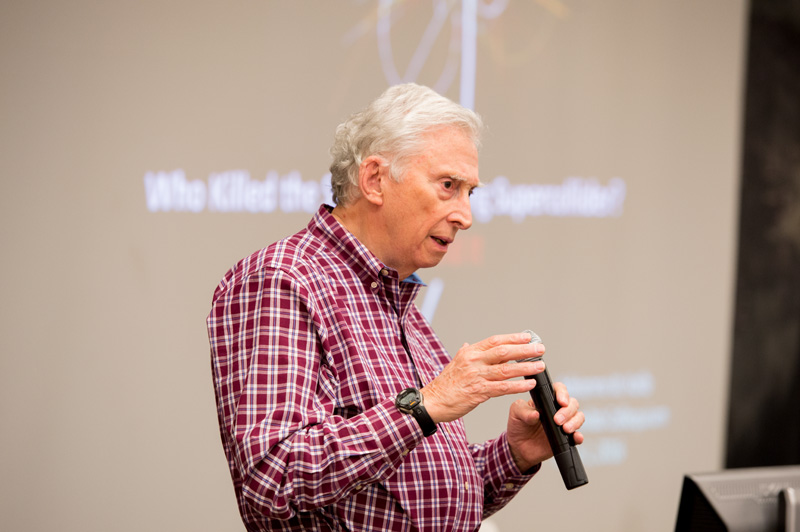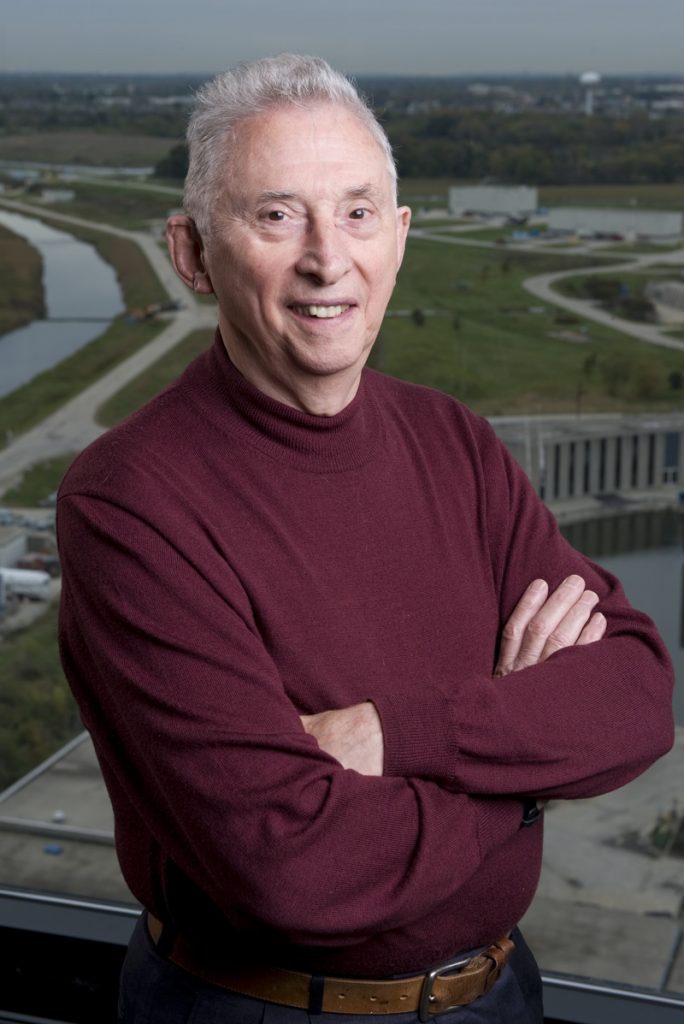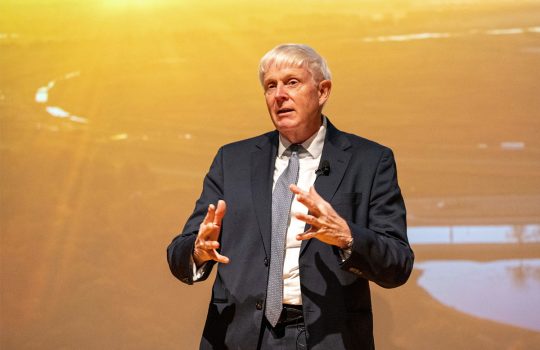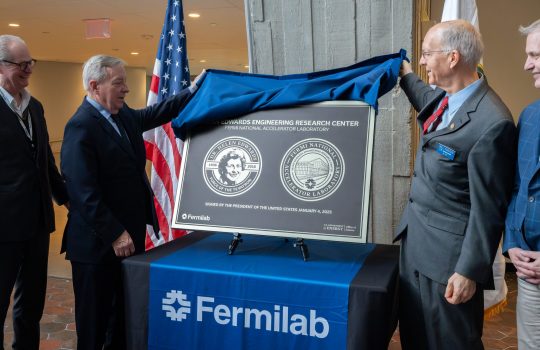John Peoples Jr., Fermilab director from 1989-1999, passed away on June 25, 2025 at the age of 92.
As the third director of Fermi National Accelerator Laboratory, his career spanned more than half of a century. Over the course of this time, Peoples led Fermilab during the run of the Tevatron, which contributed to the discovery of the top quark on March 2, 1995, made the Main Injector project a reality, and initiated an astrophysics program at Fermilab.
“Achieving great science requires great leadership, and John Peoples was that. His passion and dedication to physics and astrophysics led to significant contributions in Fermilab’s history,” said interim Fermilab Director, Young-Kee Kim. “He worked continually to maintain support from local, state and federal levels for Fermilab, helping secure funding for the Main Injector upgrade, which was significant to the lab’s rich science program since the 2000s,” she added.

Peoples earned his bachelor’s degree in electrical engineering from the Carnegie Institute of Technology in 1955. He worked briefly as an engineer before turning to physics, receiving his Ph.D. at Columbia University. Later in his career, that engineering background was often vital to finding solutions and solving technical problems.
He came to Fermilab on a sabbatical from Cornell in 1971 to start work on a photoproduction experiment. Joining the lab with temporary appointments as a scientist in 1972 and 1973, Fermilab’s first director, Robert Wilson, appointed him head of the proton beamline. Peoples officially joined the lab in April 1975 as head of the Research Division.
From 1980-1987, he led the design and construction of the antiproton source that collected and stored more antiprotons than any other facility in the world. In 1987, Peoples was appointed deputy director of Fermilab, and two years later he succeeded Leon Lederman as the lab director.
“John was tireless in his commitment to Fermilab and to it being the premier high energy physics laboratory in the U.S. He was ahead of his time in recognizing the talents and contributions of scientists at the lab who otherwise would’ve been overlooked,” said Regina Rameika, associate director for the Office of High Energy Physics in the Department of Energy’s Office of Science. During People’s tenure as director, Rameika led the MINOS and DONUT experiments at Fermilab and was the deputy head of the lab’s research division.

Credit: Reidar Hahn, Fermilab
Peoples formed an experimental astrophysics group in 1991 at Fermilab and the University of Chicago, and he was responsible for Fermilab becoming an early partner in what was to become the SDSS. Years later, he took on the role of director of the DES to pursue funding, collaboration from international partners and mentoring early career scientists.
In 2005, he worked with Fermilab to formally establish the Peoples Fellowship, created to assist young physicists interested in transitioning from experimental physics to accelerator physics. Over the last two decades, several dozen young researchers, many of whom achieved eminent positions in the scientific community, have benefited from the program.
Peoples was awarded the Robert R. Wilson Prize for Achievement in the Physics of Particle Accelerators from the American Physical Society in 2010 for his “critical and enduring efforts in making the Tevatron Collider the outstanding high-energy physics accelerator of the last two decades.”
In his retirement, Peoples made many visits back to Fermilab, checking on the status of projects like the Dark Energy Survey and talking to scientists about different experiments.
“John was a great leader,” said former Fermilab scientist Steve Holmes. “He was director during a very critical period, when the Tevatron accelerator really came to the forefront. And in the early ’90s he worked tirelessly to make the Main Injector project a reality. He realized that one day the Tevatron program would end, and the Main Injector would become the future of the lab. If not for this insight, Fermilab and the U.S. would not have an accelerator-based high-energy physics program today.”
Fermi National Accelerator Laboratory is America’s premier national laboratory for particle physics and accelerator research. Fermi Forward Discovery Group manages Fermilab for the U.S. Department of Energy Office of Science. Visit Fermilab’s website at www.fnal.gov and follow us on social media.



